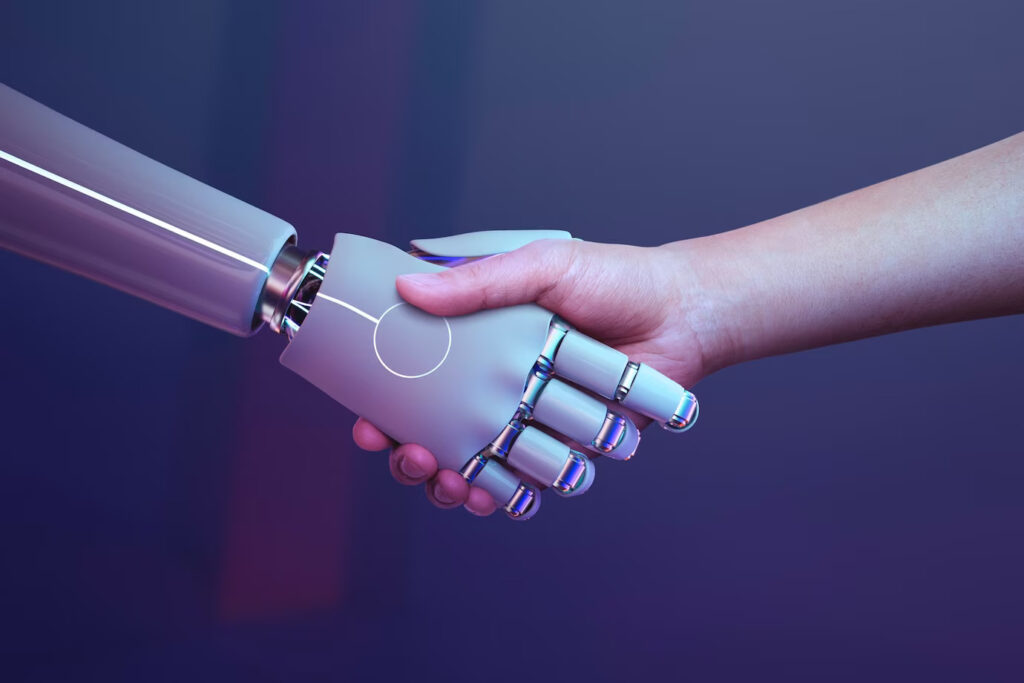Improving productivity with Artificial Intelligence involves leveraging AI-powered tools and technologies to streamline tasks, automate processes, and gain insights for better decision-making. Here are some examples of how you can use AI to enhance your productivity:

- Task Automation: Use AI-powered task automation tools to handle repetitive and time-consuming tasks. For instance, you can use a social media management platform that automatically schedules and publishes posts, freeing up your time for other important activities.
- Email Management: Employ an AI-powered email client that categorizes emails, filters spam, and suggests responses. This way, you can focus on the most critical emails and respond efficiently.
- Document Processing: Utilize AI tools that can scan, digitize, and organize documents. For instance, you can use OCR (Optical Character Recognition) software to convert scanned documents into editable text.
- Smart Searching and Insights: Leverage AI-powered search engines and analytics tools to quickly find relevant information and gain insights from large datasets. This can be useful for market research or trend analysis.
- Time Management: Use AI-based time tracking apps that analyze your work patterns and suggest optimal time management strategies. This can help you prioritize tasks and allocate time effectively.
- AI-Enhanced Collaboration: Implement collaboration platforms with AI features that suggest relevant files or team members based on the context of your conversations. This can streamline collaboration and information sharing within teams.
- AI-Driven Learning Platforms: Explore AI-based learning platforms that offer personalized learning paths based on your interests and skill level. This can help you acquire new skills efficiently.
- AI-Powered Writing Tools: Utilize AI writing assistants to improve the quality of your written content. These tools can provide suggestions for better grammar, style, and clarity in your writing.
- AI for Decision Support: Rely on AI tools to analyze data and provide insights for decision-making. For example, you can use AI-powered analytics tools to assess customer behavior and preferences to make informed marketing decisions.
- Automate Repetitive Tasks: AI-powered tools can automate repetitive and mundane tasks, such as data entry, email filtering, scheduling, and file organization. This frees up your time to focus on more strategic and creative aspects of your work.
- Smart Personal Assistants: AI-powered virtual assistants, like Siri, Google Assistant, or Alexa, can help you with tasks such as setting reminders, creating to-do lists, and providing answers to simple questions, allowing you to stay organized and on track.
- Natural Language Processing (NLP): AI-driven NLP technology can be used to analyze and extract insights from large volumes of text data quickly. This can be helpful in market research, customer feedback analysis, and sentiment analysis.
- AI-Powered Project Management: AI can assist in project planning, scheduling, and resource allocation, helping to optimize workflows and meet deadlines more efficiently.
- AI-Enhanced Communication: AI-powered chatbots can handle customer inquiries and support requests, saving time for your team and providing 24/7 assistance to customers.
- AI for Data Analysis: AI can quickly analyze vast amounts of data, identify patterns, and generate reports, aiding in business intelligence and strategic decision-making.
By integrating AI into your daily workflow, you can streamline tasks, reduce manual efforts, and focus on high-value activities that require your creativity and problem-solving skills. Always stay informed about the latest AI advancements and explore tools and applications that align with your specific productivity needs.
[…] Collaboration: Imagine a future where humans and AI work side-by-side, leveraging their respective strengths to achieve extraordinary feats. Gemini can be the bridge that facilitates seamless collaboration […]